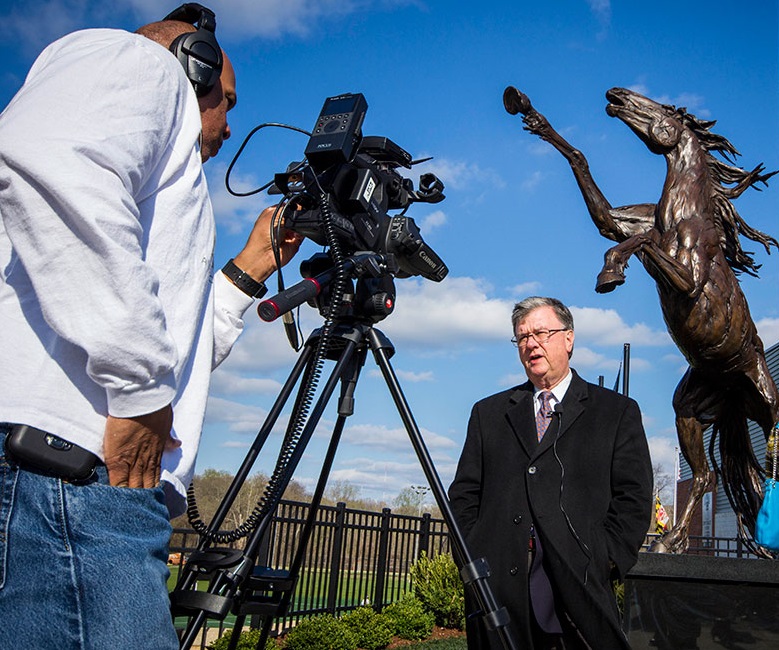Stevenson’s higher education success story
By Barry Rascovar
For MarylandReporter.com
On Wednesday, Maryland’s Board of Public Works is scheduled to vote on transferring 117 acres of the old Rosewood State Hospital property to Stevenson University. It marks a fitting conclusion at Stevenson to the transformative presidency of Kevin Manning.
College presidents take on high-pressure jobs in which they spend far too much time fundraising, budget-balancing and involvement in the community, not to mention tamping down internal flare-ups.
It’s a grueling job.
Sheila Bair can attest to that. She announced her resignation last week as president of Washington College in Chestertown after just two years. “I underestimated the hardship” a college presidency can entail, she said – devoting her energy to running Washington College, leaving little time for her family.
That’s a powerful admission from an individual whose Herculean effort as chair of the Federal Deposit Insurance Corp. helped stop this nation’s Great Recession from turning into a second Great Depression. Apparently a college presidency proved a tougher task.
Long tenure at Stevenson
Manning lasted a remarkable 16 years as president of Stevenson (formerly Villa Julie College). It took a toll on him as well: He announced 15 months in advance he would be stepping down this month, then left the job he loved far earlier than expected when his doctor grew alarmed by his stress-related fatigue.
His successor, Eliot Hirshman, inherits a university full of momentum. Today, Stevenson is one of the gems in Maryland’s higher-education tiara.
(Note to readers: I’ve been a member of the institution’s President’s Advisory Council during Manning’s tenure and have had a good view of developments over the past decade and a half. It also makes me a less than impartial observer.)
The Rosewood property Stevenson is acquiring (the state committed to a $16 million environmental cleanup in coming years) eventually will contain a new School of Education, additional athletic fields and community parkland – all connected by a bridge to Stevenson’s expansive Owings Mills campus.
Right now, the university operates at three sites. The hub of activity, filled with mid-rise resident housing, academic buildings and a student-activity center, sits on a formerly unused section of Rosewood overlooking Owings Mills Boulevard. It now is linked by a boardwalk to the North Campus, where the former owner’s high-tech pharmaceutical buildings have been re-configured to serve as schools of design, science and health professions.
Mid-century beginnings
The original 80-acre campus, in the idyllic Greenspring Valley not far away, remains in use for undergraduate and graduate studies.
That campus was fine for the original Villa Julie College, founded in 1947 as a one-year medical secretarial school for women. It later morphed into a two-year and then an independent, four-year commuter college in 1967. Villa Julie went co-ed in 1972.
The rural setting and zoning restrictions severely limited growth. It was left to Manning to build a second campus. A year later, in 2005, he bought the Ravens’ football training complex down the hill. Today, the former training camp of the Colts, Stallions and Ravens contains a stadium, a second athletic field and a fitness center.
Manning also changed the school’s name, which hindered student recruiting. Too many people thought of Villa Julie as a Catholic women’s school. He also invested in strengthening the athletic programs, especially lacrosse and football.
These improvements helped lead to a nearly 100% increase in enrollment, to 4,200 students, and an annual budget of $150 million. Stevenson is drawing more and better students from the Mid-Atlantic and Northeast regions of the country.
Drawing power
They are attracted by the college’s reasonable tuition and reputation as a place where you can earn a liberal arts degree while preparing for a career in a field with excellent employment opportunities.
Manning calls it “Career Architecture,” which he neatly integrated into the college’s long-standing emphasis on “values education.” The result: the college continues to see 92% of graduates employed in their chosen fields within six months of leaving Stevenson.
This Saturday, the private university is honoring Manning at a gala downtown. Money raised will fund scholarships for first-generation college students. That, too, will be part of Manning’s legacy.
Hirshman, the new Stevenson president, is familiar with Maryland’s higher education scene. He served as provost at UMBC before accepting a dream job running San Diego State University. He stayed seven years, dramatically raising SDSU’s profile as a university research institution.
That he would leave a large, dynamic state university of 35,000 students for a small, liberal arts school on the other side of the country speaks volumes about Stevenson’s reputation within education circles.
Kevin Manning has turned the college into a shining academic star. He deserves all the applause he’ll receive Saturday night.
Barry Rascovar’s blog is politicalmaryland.com. He can be reached at [email protected]

MarylandReporter.com is a daily news website produced by journalists committed to making state government as open, transparent, accountable and responsive as possible – in deed, not just in promise. We believe the people who pay for this government are entitled to have their money spent in an efficient and effective way, and that they are entitled to keep as much of their hard-earned dollars as they possibly can.

